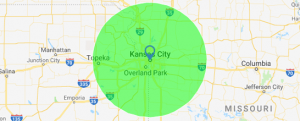How to Protect Your Glass Stovetop
 A glass stovetop adds a modern and elegant look to many home kitchens. However, the level of care involved in cleaning and protecting this piece of equipment is not for everyone. Scratches and stains can lead to lower performance and the need for expert cooktop repair. Keeping your glass stovetop clean and protected can help prevent long-term issues. Read on for more information about cleaning and protecting your glass stovetop.
A glass stovetop adds a modern and elegant look to many home kitchens. However, the level of care involved in cleaning and protecting this piece of equipment is not for everyone. Scratches and stains can lead to lower performance and the need for expert cooktop repair. Keeping your glass stovetop clean and protected can help prevent long-term issues. Read on for more information about cleaning and protecting your glass stovetop.
Preventative Measures: What NOT to Do
When it comes to protecting your glass stovetop, a little effort in prevention can go a long way in terms of preventing future headaches and the need for professional stove top repair. Cooking can be a fast-paced endeavor, and this can lead to careless movements that scratch or damage the glass cooktop. Being mindful of what cookware you are using and how you are using it is an important first step in protecting your glass stovetop.
Stone and heavy metal cookware such as cast-iron skillets can scratch and damage a delicate glass cooktop if they are not handled with care. Sliding pots and pans back and forth while cooking is a natural technique for many cooks, but this needs to be eliminated when working on a glass cooktop to prevent scratches.
Rough, abrasive cleaning agents and materials such as steel wool should also be avoided around glass stovetops. Instead, opt for a non-scratch sponge or microfiber cloth to clean and wipe the surface of a glass stovetop. On a similar note, do not let any spills sit; they should be cleaned immediately to prevent sticking, scratching, and discoloration of the glass surface.
Although it may seem intuitive to place hot cooking trays on the stovetop to cool, this can actually damage the glass surface. Instead, home cooks should place hot trays of casseroles or cookies on a cooling rack or use trivets and place them on the counter to cool.
Cleaning Your Glass Stovetop
When choosing a cloth to clean your glass stovetop, use the “eyeglass rule”: If you would not use the material to clean your glasses, do not use it on your glass cooktop. Scratches are a commonly underestimated contributor to the need for eventual stove top repair, as they can lead to limited efficiency as well as simply being unpleasant to look at.
Your choice of cleaning agents will also play a major factor in how much time and effort you will spend cleaning your glass stovetop. Bar Keeper’s Friend is a brand that many at-home and professional cooks turn to when they need to clean their glass cooktop. This product is made with oxalic acid, a heavy-duty cleaning agent that works like bleach to remove the toughest stains and dirt. Use caution, as prolonged exposure to oxalic acid can cause skin rash, pain, redness/blistering, headaches, and dizziness/nausea.
For the toughest burnt-on stains and debris, you may need to use a scraper or razor blade on your glass cooktop. It is important to use extreme caution when using a scraper on a glass stovetop, and make sure to follow the instructions exactly.
Finally, for those interested in a do-it-yourself cleaning solution, a 50/50 mix of baking soda and dish soap is a viable option. Stir until smooth, then scrub in tight circles with a nonabrasive microfiber cloth. Rinse with a damp paper towel and a fresh microfiber cloth.
Repairing Scratches
When scratches occur, it is best to treat them immediately. It may be surprising to learn that automotive scratch repair kits often work well on glass cooktops, as they are designed to leave a clear overcoat finish that resembles glass. However, it is always best practice to consult with an experienced local cooktop repair specialist before using these products on your appliance.
Looking for cooktop repair in Kansas City, St. Louis, or a nearby suburb? Call Diamond Factory Appliance today. We work on most major brands of cooktops and also provide expert refrigerator repair, dishwasher repair, and more. Contact us today with questions and to schedule your cooktop repair appointment.




